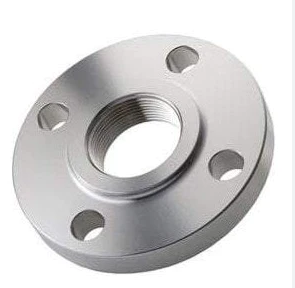A pipe flange is a mechanical joint used to connect two pipes or other components together. It consists of a flat or raised circular plate with bolt holes around its perimeter. The flange is placed between two pipe ends and secured using bolts, creating a strong and leak-proof connection.
Here are some key points about pipe flanges:
1.Types of Flanges: There are several types of flanges available, including slip-on flanges, weld neck flanges,
socket weld flanges, threaded flanges, lap joint flanges, blind flanges, and more. Each type has specific features and applications.
2.Flange Faces: Flanges have flat, raised, or ring-type sealing surfaces known as flange faces. The selection of flange face depends on the application and the type of gasket used for sealing.
3.Bolt Holes: Flanges have evenly spaced bolt holes around the circumference. These holes allow the flange to be bolted to another flange or a matching component, such as a valve or a fitting.
4.Gaskets: A gasket is placed between two flange faces to ensure a tight seal and prevent leakage. The choice of gasket material depends on the fluid or gas being conveyed and the operating conditions.
5.Pressure Rating:
Flanges are designed to withstand specific pressure ratings, which are usually indicated by a class or pressure rating. The pressure rating determines the maximum pressure the flange can handle without failure.
6.Flange Standards: Flanges are manufactured according to various industry standards, such as ANSI/ASME B16.5 (American), EN 1092-1 (European), and JIS B2220 (Japanese), among others. These standards specify dimensions, materials, and other technical requirements.
7.Applications: Pipe flanges are widely used in industries such as oil and gas, petrochemical, chemical processing, power generation, water treatment, and HVAC systems. They provide a means to connect pipes, valves, pumps, and other equipment efficiently.


